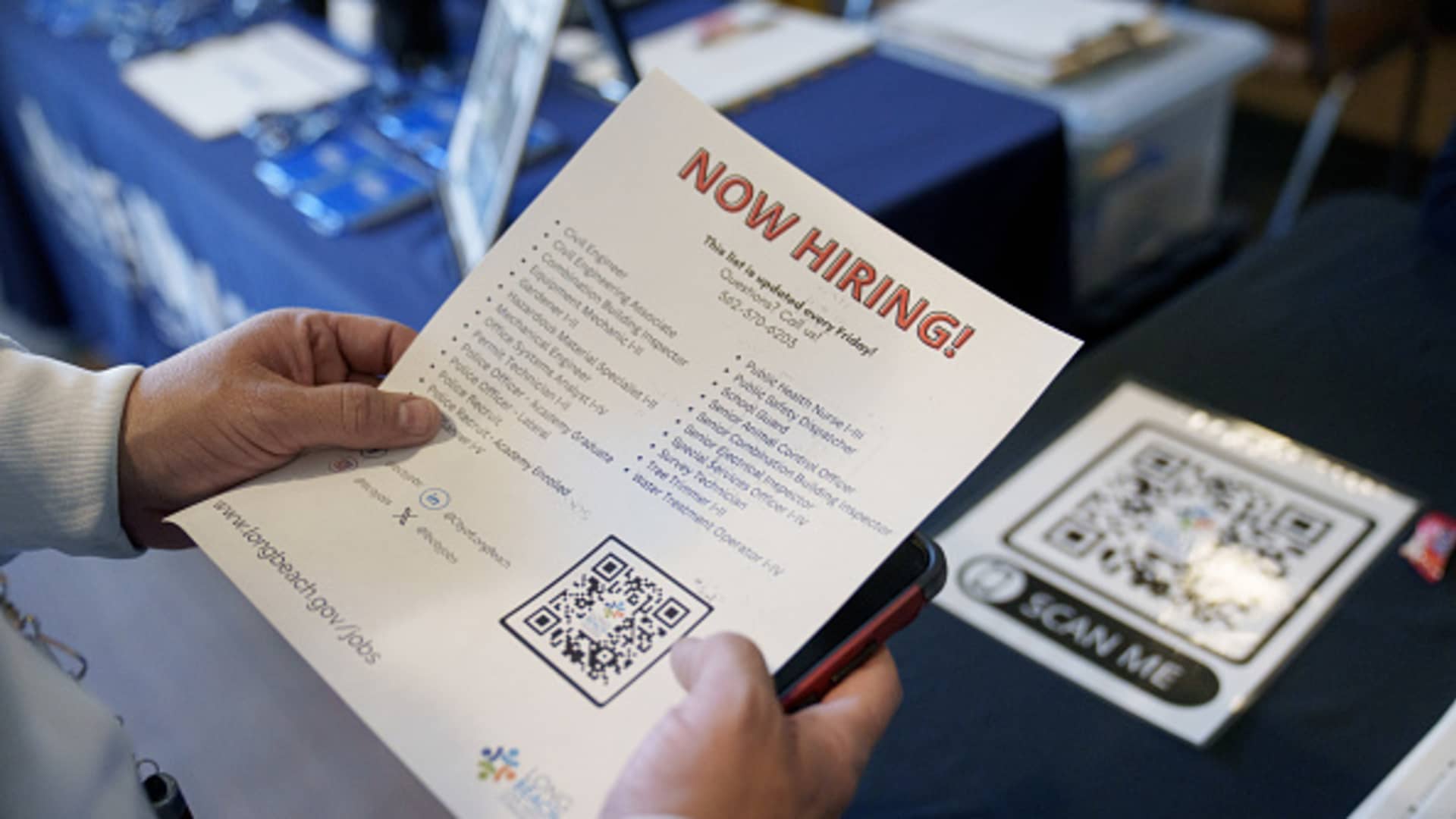Last year, two unions representing workers at three major automakers and UPS negotiated new labor contracts that included big raises and other benefits. The leaders of the unions – the United Automobile Workers and the Teamsters – hoped the victories would help them organize workers across their industries.
The UAW won one vote to unionize a Volkswagen plant in Tennessee last month and lost one at two Mercedes-Benz plants in Alabama this month. The Teamsters have made even less progress with UPS’s major non-union delivery rivals, Amazon and FedEx.
Polls show that public support for unions is at its highest in decades. But labor experts said structural forces were making it harder for unions to increase membership, which as a percentage of the total labor force is at its lowest level in decades. Unions also face strong opposition from many employers and conservative political leaders.
The Teamsters provide an instructive case study. Many of the workers who make deliveries for Amazon and FedEx work for contractors, typically small and medium-sized businesses that can be difficult to organize. And delivery workers employed directly by FedEx in its express business are subject to a labor law that requires unions to organize all similar workers in the company nationwide at once – a stricter standard than that required for organizing workers at automakers, UPS and applies to other employers.
Some labor experts also said the Teamsters did not push as vigorously as the UAW to organize nonunion workers after reaching a new contract with UPS.
“They didn’t have the energy that you saw from the UAW leaders,” said Jake Rosenfeld, a sociologist who studies labor at Washington University in St. Louis.
Teamsters officials said the UPS deal, which increases a UPS driver’s average annual compensation including benefits from $145,000 to $170,000, has helped them attract members. At DHL, a delivery company where the union has long had a strong presence, the union gained 1,100 members last year and is pushing to gain another 1,500. The Teamsters are also pursuing a lawsuit against Amazon that could allow them to gain ground against the company and its contractors.
“The mobilization helped us a lot,” Teamsters President Sean O’Brien said in an interview, referring to the UPS contract. “We have set the standard in the industry.”
But the union also suffered losses. Yellow, a trucking company that employed 24,000 Teamsters, closed last year and filed for bankruptcy protection.
Amazon and FedEx expressed confidence in their approach to managing and compensating workers. Amazon said it made investments that improved pay and benefits for its delivery partners. FedEx said its non-union model allows it to get a quick raise, while UPS’s unionized employees are bound to the terms of five-year contracts.
“Our culture, built and tested over 50 years, is based on the philosophy that when we take care of our employees, they will provide our customers with outstanding service that positively impacts our company’s bottom line,” said FedEx Chief Executive Officer Tracy Brightman said in a statement.
Around 310,000 UPS employees belong to the Teamsters. Many of them see FedEx and Amazon drivers on their routes and talk about pay, benefits and working conditions.
“We make a lot more money than anyone in the industry,” said Essence Carlisle, a part-time package handler at the UPS hub in Louisville, Kentucky. “I definitely plan to pursue a career here.”
The UPS deal gave part-time workers, more than half of the company’s unionized workforce, a 26 percent pay increase to at least $21 an hour. Ms. Carlisle earns nearly $24 an hour and works about 20 hours a week, giving her time to run a bakery on the side, she said. Her friends who have full-time jobs as drivers for Amazon make about $19 an hour, she said.
As big as UPS’s raises were, they didn’t increase wages much more than inflation. Immediately after the last deal, the top wage was $44.25 an hour, 22 percent higher than five years earlier. During this period, consumer prices rose by 21 percent.
And UPS typically hires new union employees in part-time jobs that they keep for a few years. Therefore, some people may not be willing to seek a job in the company.
Still, last year’s Teamsters contract was widely discussed online, spawning memes of UPS drivers arriving at customers’ doors in designer clothing.
“Whether joking or not, everyone said, ‘Hey, I need a job at UPS,'” said Juan Martinez, a UPS driver in Southern California.
Under the new contract, Mr. Martinez expects to earn $110,000 to $120,000 annually, depending on how much overtime he works, he said. He said his income allows him to spend more on his children’s education.
Under the Teamsters contract with UPS, the peak hourly wage will rise to $49 by the end of the five-year contract. Amazon said in January that the average wage of workers at its delivery companies in the United States was $20.50. FedEx declined to provide an average pay rate for its delivery drivers.
Despite the above-average pay from UPS over the years, the Teamsters were unable to gain acceptance at either FedEx or Amazon.
The high turnover of delivery and warehouse workers at Amazon and FedEx — where each part-time position has been filled and vacated an average of twice in the past year — makes it difficult to organize them.
Another challenge is that delivery people at Amazon and drivers who deliver for FedEx Ground are employed by contractors. Mr. Rosenfeld, the labor scientist, said trying to organize a few dozen people at each contractor could be time-consuming and costly.
Last year, 84 workers at an Amazon contractor near Los Angeles joined the Teamsters. But a few days earlier, Amazon had terminated the contract with the operator Battle-Tested Strategies, the company said, due to, among other things, failure to follow appropriate security procedures.
The Teamsters asked the National Labor Relations Board to rule that Amazon was a joint employer of the workers and order the company to reinstate the contract. The board still has to decide.
A positive ruling would be “a huge deal” and an “inspiration to thousands of other workers across the country,” said Randy Korgan, a Teamsters official.
Johnathon Ervin, the owner of Battle-Tested Strategies, said he believes Amazon terminated the contract, resulting in job losses for all of its employees due to unionization efforts. An Amazon spokeswoman, Mary Kate Paradis, denied this.
Mr. Ervin said the minimum wage for his workers under the Amazon contract is $19.75. “If you’re going to ask people to make this a career, you should have better working conditions and pay drivers better,” said Mr. Ervin, a 26-year Air Force veteran.
Amazon did not respond directly to this criticism. The company said its contractors, which it calls delivery service partners, created 279,000 driver jobs over the past five years.
“Helping DSPs create a good overall work experience is important to us. That’s why we’ve invested more than $8 billion in state-of-the-art technology, security features, plans, programs and services for Amazon DSPs and their drivers. “Ms Paradis said in a statement.
Labor groups have made some progress at Amazon, including organizing workers at a warehouse on Staten Island. But Amazon is challenging the election there, and that union is embroiled in infighting.
There is another potential barrier to unionization at FedEx.
FedEx was founded as an airline, and its express business employees are subject to the Railroad Labor Law, which requires unions to organize nationwide and company-wide at the same time. Union officials say it would be easier to conduct individual votes at each company location, as allowed under the National Labor Relations Act, which applies to workers at UPS and automakers.
However, some FedEx employees belong to a union. Nearly 6,000 FedEx Express pilots are represented by the Air Line Pilots Association. The Teamsters try to organize the mechanics who work on the company’s aircraft.
FedEx said its delivery drivers benefited from not joining a union as the company raised wages significantly during the home delivery boom in 2021 and 2022, when UPS workers’ raises were locked in by an agreement reached before the pandemic became. A FedEx spokeswoman noted that the company incurred $1.4 billion in additional labor costs in fiscal 2022.
Source link
2024-05-27 22:42:16
www.nytimes.com















